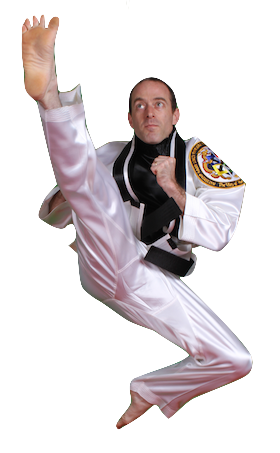
Vision
Imagine getting sitting down behind the wheel of a car. Before you even turn the key in the ignition, you probably have answered two questions: Where am I going? And how will I get there? As a driver, you instinctively have demonstrated vision.
Your passengers may not be concerned with either question. Your one-year-old in her carseat, for instance, need not know or care where she is going--she will get there nonetheless. Your three-year-old may insistently ask, “Where are we going?” But I doubt he will ask which road you plan to take--and he, too, will arrive at the destination nonetheless.
The reason your passengers arrive is because you possess vision. You are responsible for seeing both the goal and the roadmap, the product and the process.
Leadership requires vision. To possess vision is to see clearly not only the eventual destination but also the road that leads there. A visionary knows where he or she wants to be years from now and understands the steps that it will take to reach that point. And a visionary leader enables his or her followers to grow both by helping them to visualize their goals and by equipping them to achieve those goals – by knowing where they are going and by showing them the road there.
Visualizing Your Goal
Both elements of vision – product and process – are essential. Without an understanding of the ultimate destination, we may not even recognize the road there.
For instance, some martial arts students come to class regularly and participate in the day’s activities but do not set goals for their development as martial artists. When I say that this approach to training is insufficient, I do not mean to criticize those who train simply because they enjoy training. Setting goals does not mean we should become so focused on the future that we are not present in the moment. What I mean, instead, is that the present is richer and more meaningful if we are conscious of the reason we are here, doing what we are doing. And in our training as martial artists, an awareness of the goal helps us to achieve that consciousness.
Visualizing our goals – earning a black belt, becoming a certified instructor, achieving mastership – provides a focus for our training. Absent an awareness of the goal, our training loses its texture. We may attend class and practice whatever material our instructors teach on that day. But we lack an understanding of where that day’s training fits in the broader context of our development as martial artists. This failure, in turn, hinders our ability fully to appreciate and internalize the day’s lesson.
Take stances, for example. If we practice the front stance in a vacuum, then we may miss the importance of placing the feet shoulder width apart, locking the back leg, ensuring that both feet are facing forward and bending the front leg to allow our hips to settle into the stance. The stance exists on its own, with no apparent purpose, and we therefore do not give it our full attention. However, if we visualize the goal of performing advanced Taekwondo kicks in a dynamic setting like sparring, then we begin to understand how important it is to develop leg strength and good balance. With that understanding, the front stance is no longer simply a physical position with a set of rules attached (shoulder width, three foot lengths, hips forward, front leg bent, rear leg straight, etc.). Instead, it is an instrument that helps us to practice stabilizing our center of gravity, toning our quadriceps, stretching our calves and hamstrings, and moving fluidly without sacrificing balance--all of which brings us closer to the goal of performing advanced dynamic movements. In this way, visualizing your goal makes your training multi-dimensional. You not only enjoy the process more than you would without an awareness of the product, but you also benefit more from it.
In some contexts, visualizing your goal is as easy and instinctive as knowing where you plan to go before you start your car. But sometimes it is not so obvious. At school or at work, we often are too consumed by our daily responsibilities to visualize our goals. We move from task to task with only the short-term goal of accomplishing each task. But unless we can see where these tasks lead in the longer-term, they eventually can become meaningless. And few things are as soul-deadening as the rote execution of meaningless tasks.
The goal need not be an external reward. Earning your high school diploma or gaining a career promotion may well motivate you to apply yourself to your studies or your job. And the desire to graduate or to earn a salary bonus does give some meaning to the work required to reach those goals. But it is often helpful to visualize internal rewards, in order to fully appreciate the intrinsic value of the tasks themselves.
When I was in law school, I had a goal fairly clearly in mind. I knew that I wanted to work on behalf of disadvantaged children. Before arriving at my first lecture, I had already begun to visualize an organization that would work with the juvenile court system and the educational system to enroll at-risk youth in martial arts programs nationwide. This vision informed my choices as a law student. I chose courses that would equip me to work on behalf of children, including a class that focused on nonprofit organizations. I did not try out for the Harvard Law Review or other extra-curricular activities that would look good on a résumé but that had no connection to my goal of serving children. I sought out mentors with expertise in juvenile advocacy. And I found summer internships in organizations and agencies whose mission focused on children.
Being able to visualize my goal obviously made it easier for me to reach that goal: I now run the organization that I visualized. And I am happy doing it. But it also made the road there richer and more fulfilling. I enjoyed my law school experience, because I understood why I was there and saw the practical value in what I was learning.
You probably know many people who dislike their jobs. I could have predicted with reasonable accuracy which of my law school peers would fall into that category. They did not know why they were in law school. They couldn’t think of anything else to do, and it just seemed like an easy default choice after college. They said things like, “I don’t know if I even want to be a lawyer, but you can do a lot of different things with a law degree.” One friend enjoyed taking black-and-white photographs of all of his friends. Another was interested in writing screenplays. A third friend was passionate about public service and spoke of wanting to work with homeless children. But all three ended up taking classes in topics like securities law in order to land lucrative corporate firm positions. There was, in short, no connection between who they wanted to be and what they were doing. Unsurprisingly, they did not love law school and they hate being lawyers.
I describe these people not to congratulate myself but to illustrate the risk of plunging forward day by day without visualizing your goals. Without a clear idea of where you are going, you have no mechanism for evaluating the choices you confront. You therefore risk taking the path of least resistance at each juncture, and every decision risks taking you further and further from the kind of person you want to be. On the other hand, if you can visualize your goal, then at each of life’s intersections you can ask yourself, “Which road will carry me closer to my destination?” And the knowledge that you are on the right path will make your travels more enjoyable and rewarding. Conversely, if visualizing your goal does not make the road any more meaningful or fulfilling, then there’s a good chance you are on the wrong road.
Achieving Your Goal
If we see our goals clearly but do not visualize the path to reach them, then they may remain forever in the distance. We may wander without achieving anything other than accidental progress. We might just as easily stagnate as move forward.
I often ask my students, “How many of you want to become black belts?” Nearly all of them raise their hands. But the reality is that a very small percentage of my students (or anyone else’s) will ever earn their black belts. There are many reasons for this discrepancy. Some students’ priorities change and they abandon their goal. Others simply lack the motivation to do the work necessary to reach the goal. Personal hardships, physical injuries and career obligations can all intervene. But at the heart of this gap between expressed and fulfilled goals is this reality: Simply saying you want to be a black belt does not make you a black belt.
In other words, when my students raise their hands and say they want to be black belts, they are not setting a goal. They are simply stating a fantasy. What transforms a dream into a goal – and a dreamer into a visionary – is the ability to see the steps that lead there.
When I am about to ski a particularly steep slope, I like to stand at the top for a moment. I can see the tiny skiers waiting in the lift line at the bottom of the mountain, far below me. If I raise my gaze, I see mountains in the distance, their peaks no higher than I am. The task ahead seems intimidating. Then I change my focus, moving from the mountains and the sky to the moguls at my feet. Suddenly all I see is an easy path from one mogul to the next, maybe 10 feet ahead. I begin to ski, following that path, and within minutes I have joined the skiers in the lift line below.
At the micro-level, this lesson is obvious. Suppose your goal is simply to execute a proper front kick. Once you have set that goal, you are no more capable of doing a front kick then you were before. You reach your goal only when you learn the road there: How to focus on the target, chamber your knee, align the ankle joint, position the toes so that you strike with the ball of the foot, pivot the supporting foot as you extend the kicking leg, maintain a solid sole, relax your upper body, preserve your posture, keep your hands up, re-chamber your knee, and return your foot to a stable stance.
With larger goals, the need to visualize the path is less obvious but no less important. Deciding that you want to be a better husband or wife does not make you one. The key is to define the steps you will take to get there. It may mean resolving to really listen when your spouse tells you about his or her day, instead of catching the general gist while thinking about the work you have to complete tomorrow. It may mean intentionally taking an interest in the books your spouse is reading or the work he or she is doing. It may mean setting aside time when you will be focused on each other without any distractions, like a weekly date night. The point is that without mapping out the route to your goal, your desire to be a better husband or wife is mere fantasy.
As this example suggests, having a roadmap not only helps you reach your goal; it also helps you define it. What does it mean to be a better spouse? Breaking the goal down into component steps forces you to answer that question. And answering that question enables you to reach the goal.
When my students set goals, I ask three questions: What is the goal? What are the steps you will take to achieve it? And how will you know when you have succeeded? These questions require my students to develop a vision and not just a dream.
Suppose your goal is to improve your leg flexibility. Many adults have this goal in mind when they begin martial arts training. And many find themselves frustrated after several months of training, because they remain stiff and incapable of high kicks. The source of their frustration is their failure to visualize the path to their goal. If your goal is increased flexibility, you need to stretch daily for at least twenty minutes. Ideally, you should begin your day with a routine of dynamic stretches (non-ballistic movements that carry your muscles through their entire range of motion) and end it with static stretches (holding each position for a minimum of twenty seconds and repeating each position three times). You should note the height at which you are initially able to kick, and decide in advance on a realistic height that you intend to achieve within a specific period of time.
Note my use of the words “realistic” and “specific.” If you are an adult who has not stretched since junior varsity soccer practice in high school, no amount of visualization will enable you to kick your sparring partners in the head after just a few months of training. But if you break the goal of kicking at face height into realistic and specific steps, then you can achieve it eventually. Taekwondo Grand Master Jhoon Rhee puts it this way: “Don’t you think that if you stretch regularly you can increase your flexibility by a quarter-inch each week? Then you can increase it by an inch each month, and by a foot each year.”
The same is true of any goal, whether in your martial arts training, your school or work life, or your relationships. Vision means seeing the destination, recognizing the road that leads there, and resolving to take a series of manageable steps down that road until you reach the end.
Eternal Grand Master’s Vision
Eternal Grand Master Haeng Ung Lee was a true visionary. Before he took a single step he saw where the road would lead many years later. Upon arriving in the United States in 1962, he used a napkin to create a crude map outlining his vision of the martial arts organization that he would establish seven years later. Today, the American Taekwondo Association has touched over a million students worldwide.
The first poomsae, or form, in Eternal Grand Master’s Songahm style of Taekwondo illustrates his vision. You begin the form facing east and advance three stance lengths in that direction. You then turn toward the west, covering those same three stance lengths before continuing west for an additional three stances. Finally, you turn eastward once again and move three stances in that direction until you arrive at the point where you began.
Eternal Grand Master introduced that poomsae, called Songahm Il-Jahng, in 1983. The first half of the form (3 stances East, then 3 stances West) traced the journey that Eternal Grand Master had already travelled with Taekwondo. He had learned the martial art in South Korea (the East), and brought it to the United States (the West). But the second half of the form (3 more stances West, then 3 stances East again) was the visionary half. Songahm Il-Jahng was the beginning of the next stage in Eternal Grand Master’s journey, in which he would revolutionize Taekwondo training in the West with the Songahm curriculum, taking the martial art far beyond where it had been in the East. In the final years of his life, he would bring Songahm Taekwondo to Korea, returning to the point where he began. Many years before Eternal Grand Master’s vision was fulfilled, he memorialized it in the pattern of the first Songahm poomsae.
Eternal Grand Master’s vision as a leader crystallized with the Songahm curriculum. When I began my Taekwondo training in 1982, there were forms and one-step sparring sequences that we learned at each rank. But the connection between those forms and the skills we needed to learn--like the connection between being a fulfilled artist and learning securities law--was tenuous at best. For instance, white belts were expected to know front kicks and side kicks, but the white belt form had no kicks at all. (Indeed, the front kick did not appear until the third form.)
The Songahm curriculum changed all of that. Today, white belts learn a form and one-steps that contain all of the techniques they are expected to perform. Practicing that form and those one-steps therefore prepares them for orange belt. At each stage, the curriculum’s contents match our expectations for what a student at that level should learn. The progress from one stage to another is logical and incremental. The curriculum is completely integrated, with each part fitting into the next in order to create a coherent whole.
This whole is represented by the Songahm star. The white belt form moves in a straight line. The orange belt form creates a rectangle to the left of that line. The yellow belt form produces a rectangle to the right of it. And so on, until one has learned all of the forms and drawn an eight-pointed star. Each part contributes to the whole. Each step leads toward mastership.
Thanks to Eternal Grand Master’s vision, the beginning student of Taekwondo can visualize a goal (black belt, instructor certification, mastership) and can see a clear path to achieve that goal. Each of us can sit in the driver seat as we undertake our martial arts training, with clear answers to two questions: Where am I going? And how will I get there? Answering those questions in all realms of our existence – in our jobs, our communities and our relationships – will provide us with the vision necessary to lead meaningful lives.


